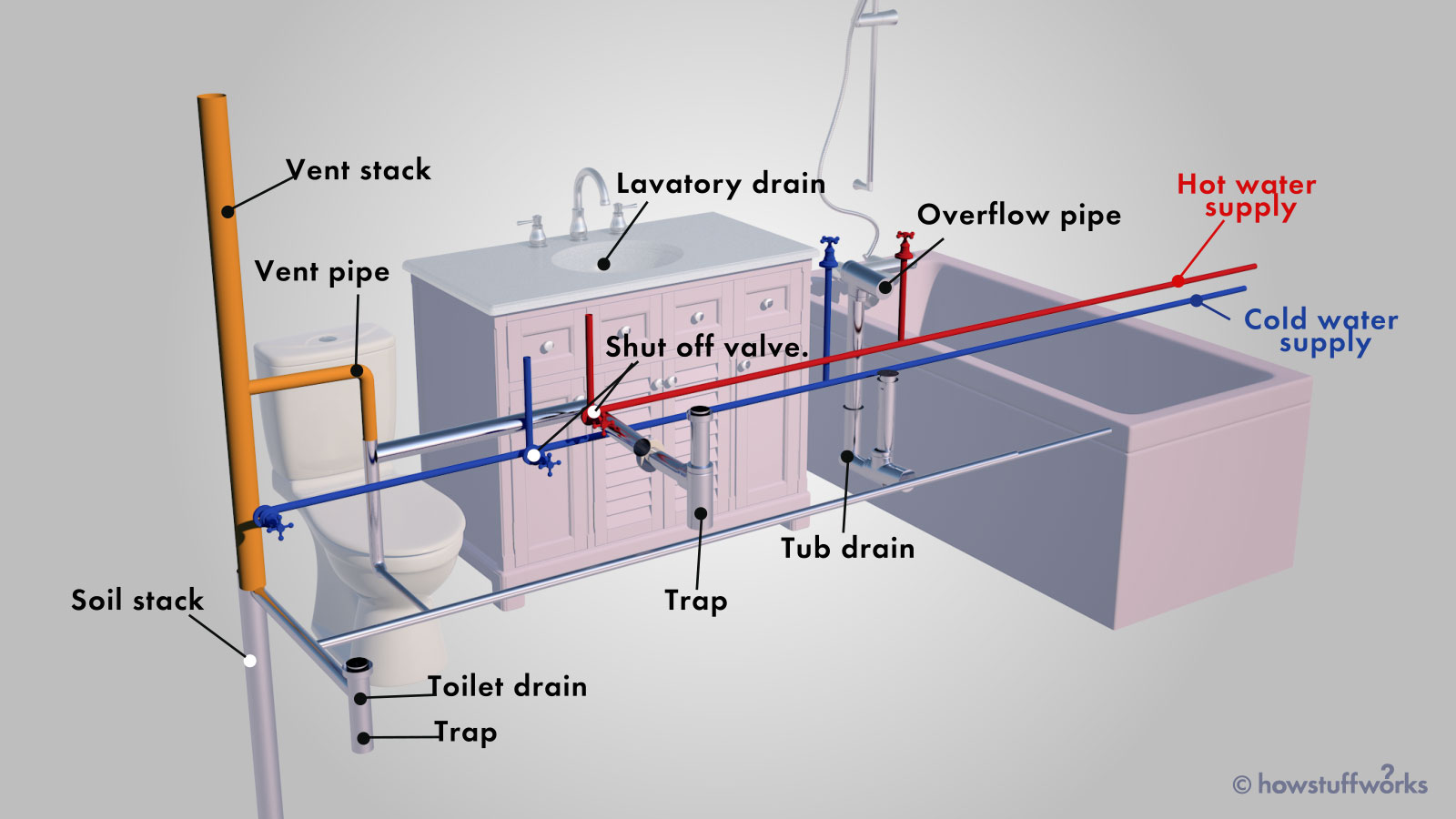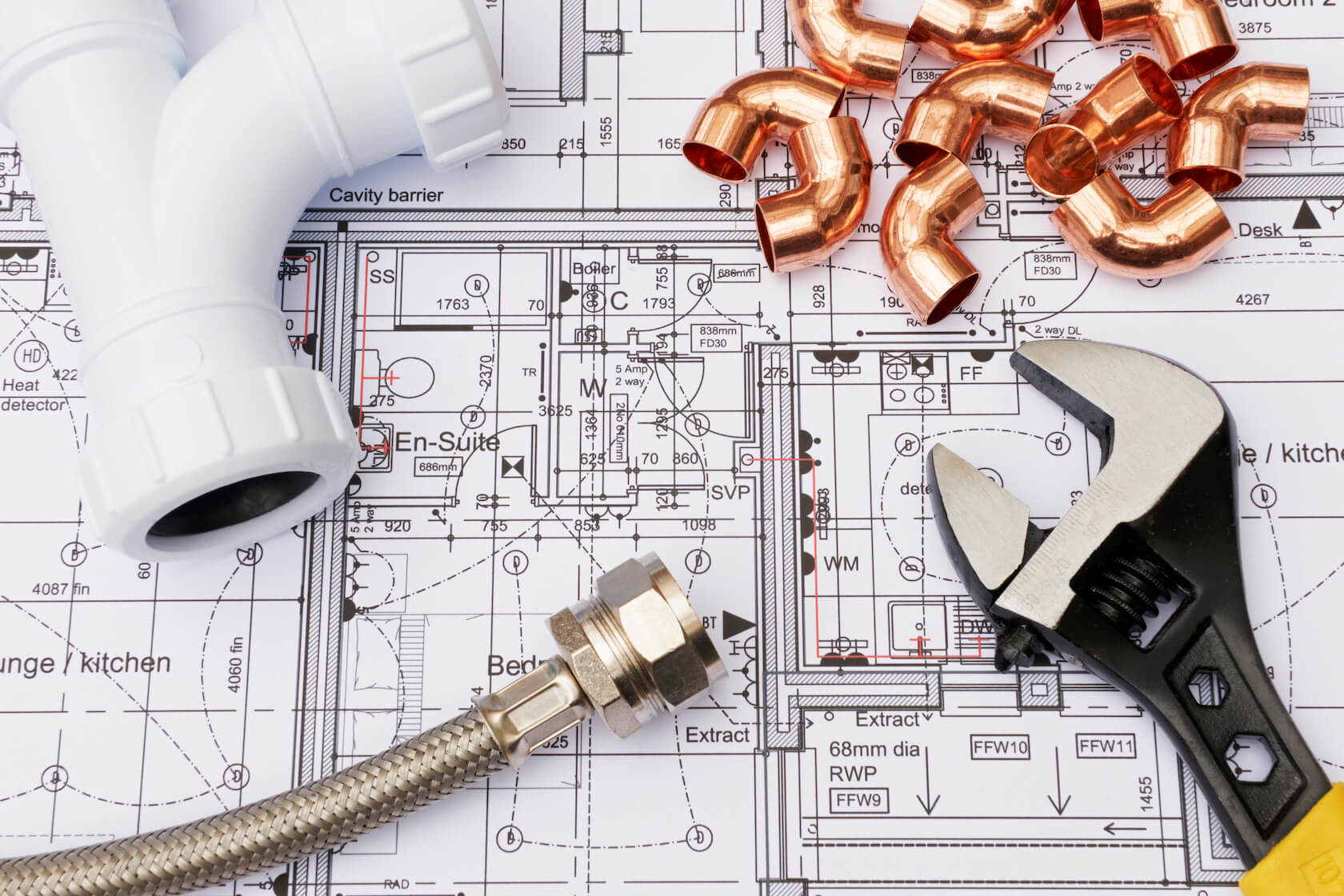Breaking Down Your Home's Plumbing System Anatomy
Breaking Down Your Home's Plumbing System Anatomy
Blog Article
Here underneath you'll find more decent points with regards to Anatomy of a House: Understanding the Components.

Understanding how your home's plumbing system works is crucial for every home owner. From supplying clean water for drinking, cooking, and showering to securely getting rid of wastewater, a properly maintained pipes system is crucial for your family members's wellness and convenience. In this detailed guide, we'll explore the detailed network that composes your home's plumbing and deal pointers on maintenance, upgrades, and dealing with common problems.
Intro
Your home's pipes system is more than just a network of pipes; it's a complicated system that guarantees you have access to tidy water and efficient wastewater removal. Knowing its elements and just how they work together can aid you protect against costly repair services and guarantee every little thing runs smoothly.
Fundamental Elements of a Pipes System
Pipes and Tubing
At the heart of your pipes system are the pipelines and tubes that lug water throughout your home. These can be made of different products such as copper, PVC, or PEX, each with its advantages in terms of resilience and cost-effectiveness.
Fixtures: Sinks, Toilets, Showers, etc.
Fixtures like sinks, toilets, showers, and tubs are where water is made use of in your house. Understanding how these fixtures link to the pipes system aids in identifying troubles and intending upgrades.
Valves and Shut-off Factors
Shutoffs control the flow of water in your plumbing system. Shut-off shutoffs are essential throughout emergencies or when you need to make repair work, permitting you to isolate parts of the system without interfering with water flow to the whole home.
Supply Of Water System
Main Water Line
The primary water line links your home to the metropolitan water or an exclusive well. It's where water enters your home and is distributed to numerous fixtures.
Water Meter and Pressure Regulator
The water meter actions your water use, while a pressure regulator guarantees that water moves at a safe stress throughout your home's pipes system, avoiding damages to pipes and components.
Cold Water vs. Warm water Lines
Recognizing the distinction between cold water lines, which provide water straight from the major, and warm water lines, which lug heated water from the water heater, aids in repairing and preparing for upgrades.
Drain System
Drain Piping and Traps
Drain pipelines bring wastewater away from sinks, showers, and commodes to the sewer or septic system. Traps protect against sewer gases from entering your home and additionally trap debris that could trigger obstructions.
Ventilation Pipelines
Ventilation pipelines permit air into the water drainage system, avoiding suction that might reduce drain and trigger traps to empty. Appropriate air flow is essential for keeping the honesty of your plumbing system.
Value of Correct Drain
Guaranteeing correct drainage avoids back-ups and water damages. Routinely cleaning drains and keeping catches can protect against costly repair services and extend the life of your pipes system.
Water Heating Unit
Kinds Of Hot Water Heater
Hot water heater can be tankless or conventional tank-style. Tankless heaters warm water on demand, while containers save heated water for immediate usage.
Exactly How Water Heaters Connect to the Pipes System
Understanding how water heaters link to both the cold water supply and hot water distribution lines helps in diagnosing concerns like insufficient hot water or leakages.
Maintenance Tips for Water Heaters
Routinely flushing your hot water heater to remove debris, checking the temperature setups, and examining for leaks can expand its lifespan and enhance power performance.
Usual Plumbing Problems
Leakages and Their Reasons
Leaks can happen because of maturing pipes, loose installations, or high water pressure. Dealing with leaks immediately stops water damages and mold and mildew growth.
Clogs and Blockages
Obstructions in drains and bathrooms are typically triggered by flushing non-flushable products or a build-up of grease and hair. Using drainpipe screens and bearing in mind what drops your drains pipes can prevent obstructions.
Indications of Pipes Troubles to Watch For
Low water pressure, sluggish drains pipes, foul odors, or abnormally high water costs are signs of prospective pipes troubles that need to be dealt with quickly.
Plumbing Maintenance Tips
Regular Inspections and Checks
Set up yearly plumbing inspections to capture concerns early. Try to find indications of leaks, deterioration, or mineral buildup in taps and showerheads.
Do It Yourself Maintenance Tasks
Straightforward tasks like cleaning tap aerators, looking for bathroom leaks using color tablets, or insulating revealed pipes in cool climates can prevent significant pipes concerns.
When to Call a Specialist Plumbing
Know when a plumbing problem needs specialist competence. Attempting intricate repairs without correct expertise can lead to even more damage and greater repair work costs.
Upgrading Your Plumbing System
Factors for Updating
Upgrading to water-efficient components or replacing old pipelines can boost water top quality, reduce water bills, and raise the worth of your home.
Modern Pipes Technologies and Their Benefits
Discover modern technologies like wise leakage detectors, water-saving commodes, and energy-efficient water heaters that can save money and lower ecological effect.
Cost Factors To Consider and ROI
Compute the upfront prices versus long-lasting savings when thinking about plumbing upgrades. Several upgrades spend for themselves via minimized energy expenses and fewer repairs.
Environmental Impact and Preservation
Water-Saving Fixtures and Appliances
Installing low-flow taps, showerheads, and commodes can dramatically decrease water usage without giving up performance.
Tips for Lowering Water Use
Basic practices like repairing leaks quickly, taking shorter showers, and running complete loads of washing and meals can conserve water and reduced your energy expenses.
Eco-Friendly Pipes Options
Consider sustainable plumbing materials like bamboo for flooring, which is durable and environment-friendly, or recycled glass for kitchen counters.
Emergency situation Readiness
Actions to Take Throughout a Plumbing Emergency
Know where your shut-off valves lie and just how to shut off the supply of water in case of a burst pipeline or significant leakage.
Significance of Having Emergency Situation Calls Handy
Keep contact info for local plumbings or emergency services readily offered for fast reaction throughout a pipes crisis.
Do It Yourself Emergency Situation Fixes (When Appropriate).
Short-lived repairs like using air duct tape to patch a leaking pipeline or putting a bucket under a trickling faucet can minimize damages up until a professional plumbing professional shows up.
Final thought.
Understanding the composition of your home's pipes system empowers you to keep it efficiently, saving money and time on repair work. By complying with routine maintenance routines and remaining informed regarding contemporary plumbing modern technologies, you can ensure your pipes system operates effectively for many years ahead.
Exploring Your Homes Plumbing Anatomy
Water Supply System
Main Water Line: This is where water enters your home from the municipal supply or a private well.
Water Meter: Typically located near where the main water line enters the property, it measures the amount of water used.
Shutoff Valve: It s crucial to know where this is in case of emergencies. It allows you to turn off the water supply to the entire house.
Pipes and Fittings: These distribute water throughout your home. Materials can include copper, PVC, or PEX.
Drain-Waste-Vent (DWV) System
Drains: Located in sinks, showers, and tubs, these carry wastewater away.
Traps: U-shaped pipes under sinks that hold standing water, blocking sewer gases from entering the home.
Vents: Pipes that lead from the DWV system to the outside, preventing vacuum formation and allowing gases to escape.
Sewer Line: Carries all wastewater from the home to the municipal sewer system or a septic tank.
Fixtures and Appliances
Sinks, Toilets, and Showers
Dishwashers and Washing Machines
Water Heaters
Maintenance Tips
Regularly check for leaks in exposed pipes and around fixtures.
Inspect the water heater annually for signs of wear.
Clean drains and traps to prevent clogs and odors.
Know how to shut off water to individual fixtures.
When to Call a Professional
Major leaks or burst pipes
Installation of new pipes or fixtures
Septic tank issues
Remodeling projects that involve plumbing changes
Conclusion
Understanding the anatomy of your home's plumbing is key to maintaining a functional and efficient system. Regular checks and knowing when to call in the experts can save you time, money, and stress.
https://www.mavyn.com/blog/exploring-your-homes-plumbing-anatomy

Exploring Your Homes Plumbing Anatomy
Water Supply System
Drain-Waste-Vent (DWV) System
Fixtures and Appliances
Maintenance Tips
When to Call a Professional
Conclusion
Understanding the anatomy of your home's plumbing is key to maintaining a functional and efficient system. Regular checks and knowing when to call in the experts can save you time, money, and stress.
https://www.mavyn.com/blog/exploring-your-homes-plumbing-anatomy
Do you like more info about Anatomy of a House: Understanding the Components? Give feedback below. We will be happy to find out your reactions about this piece. We hope that you come back again in the future. In case you enjoyed our blog entry if you please don't forget to pass it around. I value your readership.
Click Here Report this page